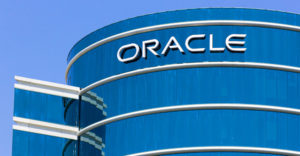Larry Ellison was having too much fun. In his second keynote of this year’s Oracle OpenWorld user conference, he was talking about his company’s database, Oracle 12c, and comparing it highly favorably to Amazon’s competing databases. It seems Ellison always has fun, which is one likely reason that the 72 year-old CTO and executive chairman of the board, looks 52, sounds 42, and probably feels 32.
Ellison’s sunny attitude no doubt was enhanced by Oracle’s last earnings call, which delivered very good news about a company that has been working on pivoting to cloud computing for several, even many, years. The earnings results showed 82 percent revenue growth in its cloud services — not only SaaS, but also IaaS and PaaS.
Oracle still derived the vast majority of its recent revenues from traditional software and hardware products, but there no longer can be much doubt that the company Ellison founded is on track to recreate itself as a cloud company. Its current messaging suggests it’s the fastest-growing cloud company, but growth is relative when you’re starting. Nonetheless, that’s a matter for another time.
10-Year Plan
Oracle’s path to the cloud will be vastly different from that of Salesforce and NetSuite — two companies Ellison had a hand in getting off the ground. He was a board member of Salesforce and the primary investor in NetSuite.
By virtue of its success over many decades, Oracle boasts more than 420,000 customers, and it has publicly and frequently committed to continuing to support those customers as they try to pivot to the cloud as well.
At OpenWorld this year, as well as last year, Ellison and other executives — including co-CEOs Mark Hurd and Safra Catz — made the point that the conversion is likely to take 10 years. Even at the end of that time, some users still be using traditional software. Hence, Oracle’s strategy and its messaging of continued support for the legacy base are quite different from its cloud competitors.
To bolster the cloud messaging, Oracle rolled out too many products to do them all justice in this short post. Every product line had something new or on the road map for the next year — quite a feat but no surprise, given the company’s US$5.2 billion R&D budget.
To my mind, just about all the announcements are in many ways subservient to this one point: Cloud computing does not mean simply placing existing apps on less expensive hardware in the sky. Instead, it’s about doing things in business that were not possible under the traditional software paradigm.
AI’s Winter Is Over
A case in point is Oracle’s focus on artificial intelligence, with its Adaptive Intelligence applications. Adaptive Intelligence uses all the buzzwords (“machine learning,” “deep learning,” “neural networks,” etc.) to deliver actionable intelligence — what used to be called “knowledge” — in order to inform business decisions that an increasing numbers of users must make in real time.
There are uses for it in sales, marketing, service and support, human resources — you name it — and those uses will beget other uses in a virtuous circle that you typically see in early innovation stages.
Consequently, the market for AI products is red hot. How hot? It is so hot that Salesforce took the opportunity again to pre-announce its AI offering, called “Einstein,” before OpenWorld got going. Salesforce most likely will have much more to say about its AI approach next week, when it holds its annual user conference, Dreamforce.
Why is AI re-emerging now? asks a recent article. After all, forms of AI have been around at least since the 1980s, but the simple truth is that running AI is so compute-intensive that there was an AI winter from roughly the mid 90s to just a few years ago.
This brings us full circle to Ellison’s giddy demeanor when comparing Oracle’s and Amazon’s database offerings.
Doing the Happy Dance
Oracle and Amazon are competitors not only in databases, but also in provisioning running systems on the cloud — aka IaaS, or Infrastructure as a Service. Ellison wanted his guests to know that his company’s approach is literally thousands of times faster in AI and OLTP benchmarks than Amazon’s — especially when using Oracle-optimized gear, but even when using Amazon’s best hardware configuration.
The reasons for this huge speed difference aren’t restricted to the software. They include how much the software is optimized — which in Oracle’s case is a lot.
Oracle’s superiority also reflects the huge investments it made in Sun, a computer company it bought a few years ago. Since then, Oracle/Sun has delivered storage arrays that are blindingly fast, relying on solid-state memory rather than conventional spindles.
As if that weren’t enough, Intel Senior Executive Vice President Diane Bryant took the opportunity in another keynote to discuss the photonics chips her company supplies to Oracle.
All you need to know about photonics right now is that the chips use laser beams to move information rather than metal on silicon. Intel builds laser-generating components right on its chips, the same way it builds transistors.
So, with just these snippets, it should suffice to say that Ellison was happy last week because his company is performing well in so many different dimensions. Its performance is the result of big investments and patience over the last several years, as new ideas were taking form as products.
Ellison has been a consummate salesman through it all, selling what he had in lean and abundant times. However, make no mistake — you can see it on his face and hear it in his voice — abundance is better.

























































Great Post!